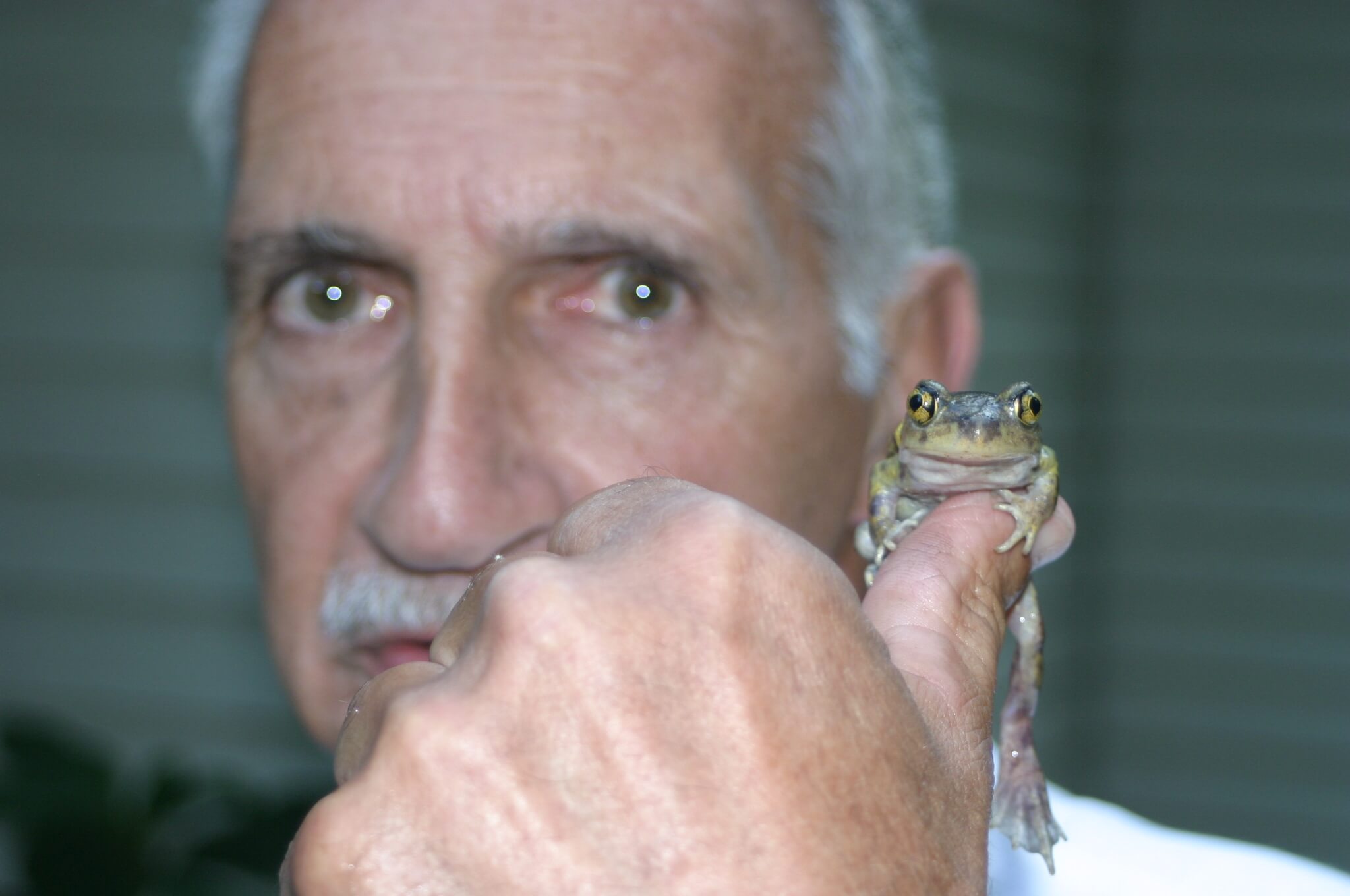BURLEIGH – It’s rare to see an Eastern Spadefoot toad in Cape May County, then again, it’s rare to see a Spadefoot toad anywhere, despite their habitat range east of the Mississippi River from Florida to New England.
They are not endangered or even threatened, but the elusive toad makes its home underground, using its two spade-shaped rear toes to quickly escape the surface.
When they do breach the surface, it’s usually during heavy rains, when most people take cover. They use the wet conditions to call to mates and to breed.
“They’re pretty common in New Jersey,” said Kevin Wilson, supervising animal keeper of reptiles at the Cape May County Zoo. “They can live underground for months and only surface when there is a lot of wet weather. Usually people see them when they are doing gardening and dig one up, but most people don’t know what they are.”
Paul Thompson, of Burleigh, is not afraid of a little rain and has seen the 2-to 3-inch gray toads with bright yellow eyes several times in his yard and breeding in his koi pond.
The first time was 25 years ago, when Thompson found the unusual creatures at a friend’s house and took them to the Cape May County Zoo, where the reptile house curator identified them as Eastern Spadefoot toads.
“He had a female and the one I brought there was a male. He asked if he could have it, so I gave it to him,” Thompson said.
On his own property, Thompson has found the toads with the vertically oriented eyes in his basement window wells.
“The wells fill up with rainwater pretty quickly. I think that is why they choose the wells,” he explained.
The nearby koi pond makes the secluded property a perfect habitat for Scaphiopus holbrookii.
“One night, I counted 16 of them calling out for mates,” Thompson said.
Thompson has seen the tadpoles too. Females can lay up to 2,500 eggs which become toads in as few as 28 days, according to the University of Georgia, Savannah River Ecology Laboratory website.
On the worldatlas.com website, it states “Spadefoot toads are an interesting object of research because of their unique dietary patterns. Tadpoles and adults have their own separate food habits. Adult toads usually depend on a carnivorous diet, based primarily on invertebrate species including grasshoppers, beetles, earthworms, snails, flies, moths, and caterpillars.
“The tadpoles will change their diet source according to the existing environmental conditions. When very young, they will feed on microscopic plant matter (phytoplankton) as well as small aquatic crustaceans and insects.
“As they grow, their diet gradually transforms to a more carnivorous one. The most unique feature of the tadpole diet is intra-specific cannibalism, wherein they eat one another.”
The toad is also a food source for predators like snakes, coyotes, owls and crows, as well as a number of other species.
Thompson’s property is traversed by a plethora of fauna including blue heron (who eat his juvenile koi fish,) snapping turtle hatchlings, birds, snakes, bugs, butterflies, even an occasional passing coyote, in addition to some cats and a pair of goats.
“I love wildlife, even as a kid. I’m not a hunter,” Thompson explained. “I only shoot animals with my camera.”
To contact Carl Price, email cprice@cmcherald.com.







